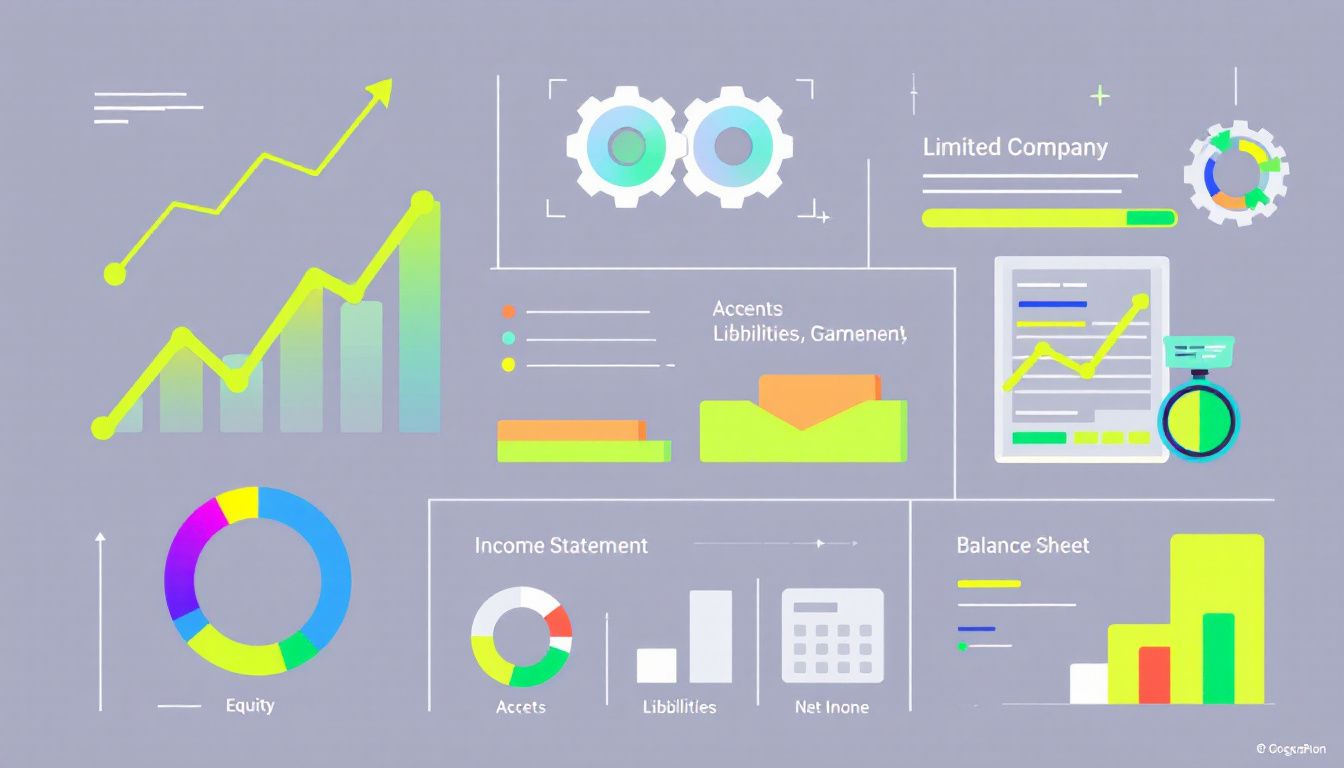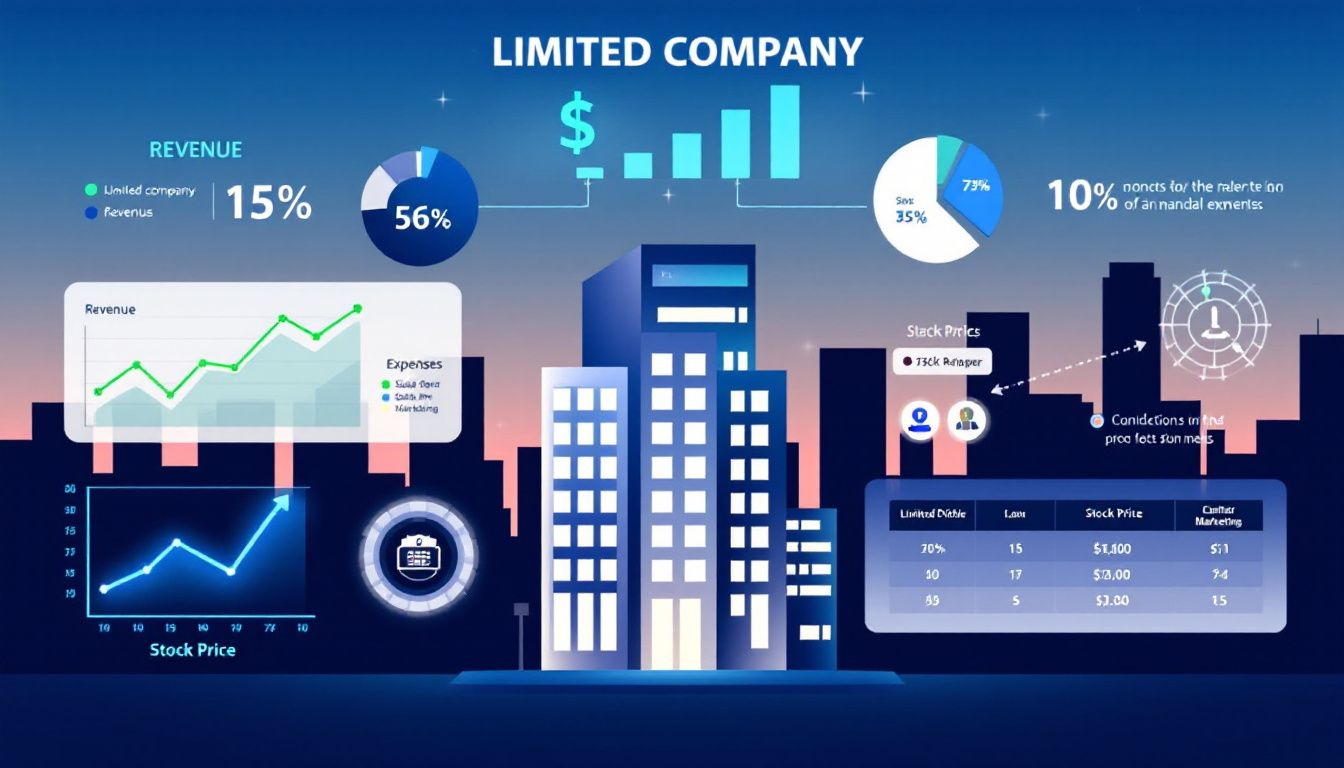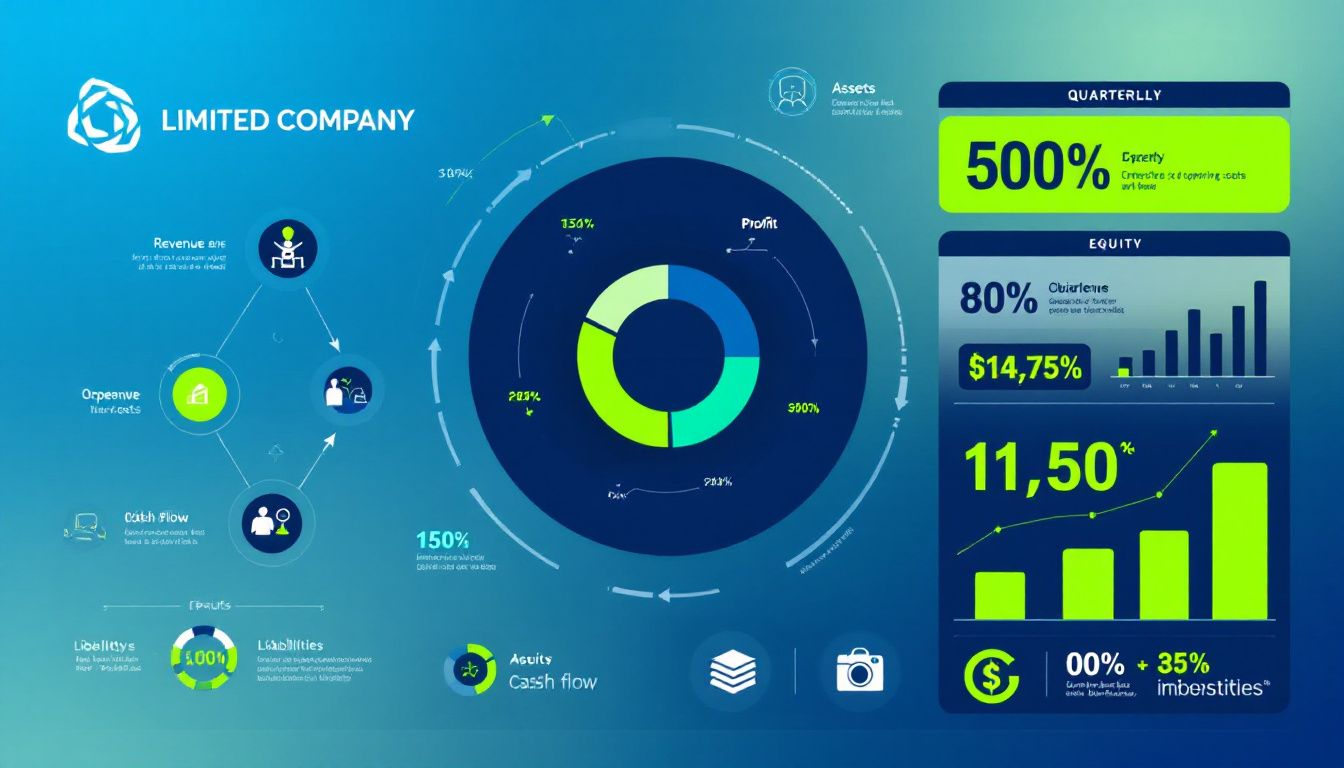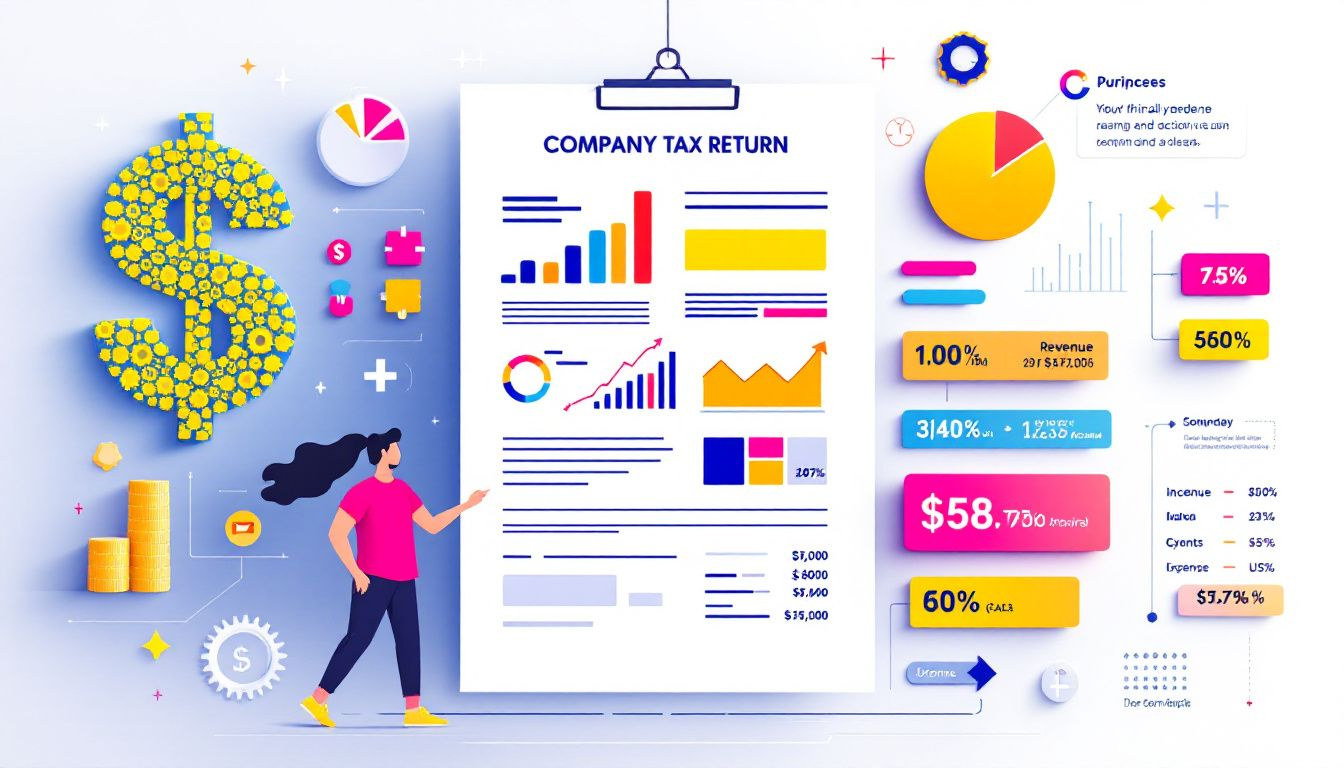Contents
Introduction
Running a limited company comes with specific accounting responsibilities. This guide will cover everything you need to know about Accounting for Limited Company, from year end accounts to tax returns and additional reporting requirements. Learn the basics to stay compliant and healthy.
Quick Facts
- Limited companies must keep accurate Year End Accounts and submit to HMRC and Companies House to be compliant and transparent.
- Key financial statements—Balance Sheet, Profit and Loss Account, Cash Flow Statement—are important to see how your company is doing and make business decisions.
- Hiring an accountant can increase tax efficiency, ensure compliance with complex rules and reduce the burden of financial management for business owners.
Limited Company Accounting

Understanding the basics of accounting is important for limited companies to be compliant and financially healthy. Company directors are responsible for making sure Year End Accounts, required by the Companies Act, are prepared and available for external inspection.
Accounting in limited companies shows the company’s position at a point in time and performance over an accounting period. All business transactions – income, expenses, assets and liabilities must be recorded. But navigating the rules and responsibilities can be overwhelming for business owners with worries about getting their accounting right.
Some owners do their own accounts which requires a good understanding of the basics like double entry bookkeeping, others use advanced accounting software – but these still require some knowledge of accountancy principles. As businesses grow so do the costs of mistakes. Many owners opt for professional accountants who bring tax law expertise and assurance of compliance – which means accuracy and peace of mind.
Financial Statements

Financial statements are the foundation of a company’s reporting, showing the financial position and performance of the company over the year. These documents are important for business decisions, tax payments and to give stakeholders data.
Look at the main financial statements: the Balance Sheet which shows assets and liabilities, the Profit and Loss Account which shows income and expenses over time and the Cash Flow Statement which shows cash movements in the business.
Balance Sheet
The Statement of Financial Position, also known as the balance sheet, is one of the main financial statements. It shows an overall picture of what the company has in terms of resources and where it got them from against its liabilities so stakeholders can see value, liquidity, borrowing capacity and overall financial stability.
At its heart are three main sections: assets which could include land, buildings and machinery and cash reserves, stocks, receivables and on the other side debts which could be mortgages, bank loans and other accounts payable. When these liabilities exceed what the business has – meaning more is owed than held – this could be a sign of financial trouble.
Knowing where your business is at through regular balance sheet analysis gives management the insight to make informed decisions. This vigilance allows you to spot growth opportunities or weaknesses in the business so you can have more control over the financial health of the company.
Profit and Loss Account
The income statement, also known as the profit and loss account or just profit and loss, shows all the income and expenses over a period of time to show the business’s ability to make profits and its efficiency in operations. This financial document is important to see the trends in profitability when making business decisions.
By breaking down expenses like lease payments, wages and utility bills on the loss account, entrepreneurs can see where to save and increase their bottom line.
Cash Flow Statement
The cash flow statement shows the cash in and out of the business, classified into operating, investing and financing activities. Monitoring cash flow is for liquidity and financial health, to see how well the business is managing its cash to meet short term obligations.
Know the cash flow statement to see where the cash is coming from and going to so the business can run and invest. Review regularly to manage cash and plan for the future.
Preparing Annual Accounts

Limited companies need to prepare annual accounts which summarise the financial transactions within their financial year which is usually 12 months. It’s a statutory requirement in the UK to file these with HMRC and Companies House every year.
Now let’s get into the process of preparing these annual accounts.
Gathering Financial Records
Gathering financial records is the first step in preparing year end accounts. You will need to gather income records, bank statements, supplier statements, invoices and receipts. Accurate records are key to transparency, compliance and decision making and should be kept for at least 6 years for HMRC audits.
Having a system in place for collecting and storing records makes preparation and avoids last minute panics, so all financial activity is recorded and easily found.
Statutory Accounts
Preparing statutory accounts involves collating financial statements which include the profit and loss account, balance sheet and additional notes that comply with accounting standards. These are filed with Companies House where they become public record. Through regular reconciliations you can spot discrepancies quickly and improve compliance and data accuracy.
With electronic recording systems that automatically store and send out reminders data is more accurate. Accounting software helps you to monitor business expenses – this makes the process of preparing statutory accounts smoother. Note here that there is a difference between profit or loss for Corporation Tax purposes and what is recorded in annual accounts.
Accuracy in these statutory accounts cannot be stressed enough. Inaccuracies will result in fines and regulatory issues from bodies like HMRC and Companies House. Attention to detail is key throughout this process.
Filing Annual Accounts
Filing annual accounts with Companies House is a legal requirement and must be done within 9 months of the accounting reference date. Make the process more efficient by filing these accounts online. You can also file any additional accounts at the same time as the annual return.
Having an accountant will get you streamlined and accurate reporting at year end, reduce the risk of errors and ensure you comply with all the filing requirements. This will keep your company’s reputation intact and avoid fines.
Company Tax Returns

All limited companies must submit a company tax return (CT600) which shows their income, expenditure and corporation tax. These returns are required for every company to both Companies House and HMRC regardless of whether the company makes a loss or has no corporation tax liability.
We’ll look at what needs to be included in the company’s tax return, when they need to be filed and how to work out the corporation tax the company needs to pay.
What to put in a Company Tax Return
A company tax return must include Form CT600, corporation tax return, Corporation Tax calculations and full statutory accounts. Also required is turnover, expenses, tax allowances, profit, capital allowances, gains on assets, directors’ loans and losses brought forward. Expenses can be anything bought for business use only.
Employees should keep receipts for all expenses to support claims and to comply with tax rules. Company tax returns must be filed online as per HMRC requirements.
Company Tax Return Deadlines
The deadline for a company tax return is 12 months after the accounting period end. Corporation Tax is due 9 months and 1 day after the year end. Late filing and late payment can result in penalties from HMRC and Companies House.
File your tax return well before the deadline to avoid penalties. Accountants can help file on time and reduce the risk of legal problems from errors.
Working Out Corporation Tax Liability
Calculating the liability for corporation tax means working out profit or loss with tax in mind. Make sure you check all outstanding debts thoroughly which will give a true picture of the business’s financial performance. This figure is crucial to comply with the rules and avoid fines as businesses have to pay corporation tax.
Make sure everything is correct and all allowances are claimed. Then
More to report…

To their main financial statements, limited companies must also file supplementary reports. These include VAT returns and the Confirmation Statement to stay compliant and avoid fines.
We’ll get into these mandatory bits.
Information Commissioners Office (ICO)
Depending on the nature of the business and the information it holds, it may be necessary to hold an annual ICO registration and pay the fees. Whilst the annual letter the ICO send out threatening action if you don’t comply, It is worth considering that your business might not need to do this and file an exemption notice with them.
Confirmation Statement
It’s a legal requirement to file the Confirmation Statement annually to confirm and verify that all company information held by Companies House is up to date. This applies to dormant companies too, who must also file this.
The Confirmation Statement must be filed at least once every 12 months, regardless of any changes to the company’s details or not. There is a fee for this filing which must be done within 14 days of the end of each 12 month period.
Common Problems and Solutions
Limited companies face accounting problems that can impact their financial health. These include late payments, tracking company expenses and keeping data accurate in company accounts.
We should look at ways to overcome these accounting challenges in limited companies.
Late Payments
Not having enough money to a pay a tax bill is a common issue experienced by small businesses and needs to be dealt with. The best course of action when this happens is to contact HMRC and arrange a time to pay agreement so it can be paid off gradually.
At the same time it is also important to make changes in your business so the issue doesn’t happen again. This could be done by reviewing your cash flows or working out how much to save for future tax bills.
Complex Deadlines
Usually the deadlines for filing returns and accounts don’t change, however there are exceptions in instances where a company has been newly incorporated and the first set of accounts is over a year long.
Due to the restriction for a CT600 return being limited to a 12 month period or less, it is sometimes the case that a set of accounts may be associated with two Corporation Tax returns. In this instance you could have several filing deadlines based on the accounts due date and a separate due date for each return.
Data Accuracy
It’s important to be accurate for compliance and to avoid penalties. The numbers on your company accounts must match the numbers on your company tax return and be backed up by evidence. Filing a Company Tax Return late can result in a fine, so timing and accuracy is key.
If there are any discrepancies or overpayments found they can be sorted out later. Keeping records from the start helps to avoid these problems. Being accurate not only helps with business decisions but also compliance with the law.
Conclusion
In summary limited companies need to have a good grasp of financial statements and complete annual accounts, file company tax returns and extra reporting. They need to overcome common problems like late payments, expense tracking and data accuracy to stay financially healthy and compliant.
Having an accountant will make navigating financial laws much easier and better financial control. Business owners who follow this guide will be able to manage their company’s finances with confidence they are compliant and growing.


